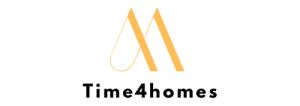time4homes
Actu
Réussir votre carrière grâce à une formation de qualité à Cherbourg-en-Contentin
Depuis que l'adaptabilité professionnelle est reine, Cherbourg-en-Cotentin se démarque par ses formations d'excellence. Face à un marché du travail en constante évolution, se doter de...
Lire la suite
Business
Caractérisation d’une entreprise : les éléments clés
Vous vous êtes déjà demandé comment une entreprise est structurée ? Quels sont les éléments qui la caractérisent ? Dans...
Lire la suite
Les étapes clés de la déconstruction d’une entreprise
La déconstruction d’une entreprise n’est pas un sujet souvent abordé dans le monde des affaires, mais il est tout aussi...
Lire la suite
Juridique
Marketing
Les meilleures pratiques pour promouvoir son entreprise sur les réseaux sociaux
À l’ère du numérique, les réseaux sociaux sont devenus un canal de communication essentiel pour les entreprises. Ils permettent de se connecter de manière authentique...Services
En quoi l’utilisation des bornes escamotables anti bélier est indispensable ?
Que ce soit pour gérer ou sécuriser les zones piétonnes ou pour protéger les lieux sensibles, les bornes escamotables anti...
Lire la suite
comment trouver des services de qualité pour votre entreprise
Votre entreprise mérite le meilleur. Par conséquent, il est crucial de bien choisir les services que vous allez consulter ou...
Lire la suite
Formation
Management
Les formations en psychologie du travail pour améliorer vos relations professionnelles
Des relations professionnelles de qualité sont cruciales pour le bien-être au travail et la productivité. Une meilleure compréhension des dynamiques de groupe et des différences...
Lire la suite
Les compétences en marketing stratégique à acquérir lors d’une formation spécialisée
Dans le monde sans cesse en évolution du marketing digital, la valorisation de nos compétences est une nécessité. Pour rester compétitif, il faut se former...
Lire la suite
